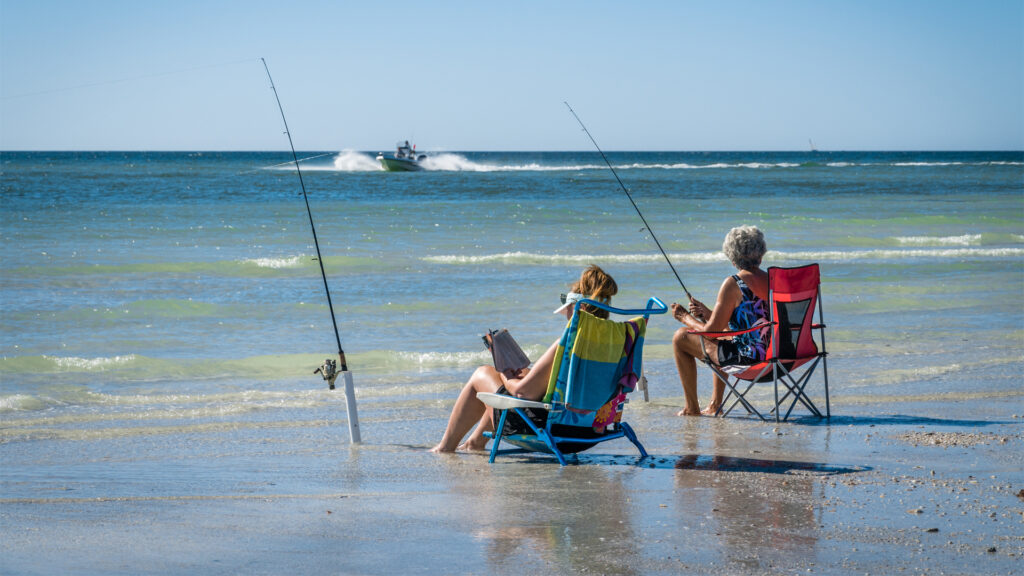By Joseph Bonasia, FloridaRightToCleanWater.org
In the early 1980s, I was backpacking in the Northeast’s Adirondack Park, with its remote and rugged mountains, forever wild forests, 30,000 miles of crystal-clear rivers and streams, and 3,000 iconically blue lakes.
One night, racoons raided my food, so the next morning found me fishing for breakfast until a local hiker called out, “Good luck with that! Lake’s dead! Acid rain!”
For decades before, pollutants from power plants in the Midwest fell upon the Adirondacks as acid rain making lake waters unlivable for fish and other life. Hundreds of lakes died. Many are still dead and will remain dead for hundreds of years more, an ecological tragedy.
My fishing license was recognition of my right to fish. But what good is a right to fish when there are no fish to fish for?
In Florida, fishing is a cherished way of life, and voters recently approved a constitutional right to fish because they believed it was politically threatened. They valued a level of protection only a constitutional right can provide.
But for Floridians who want to preserve this way of life, this amendment is step one, because a right to fish is only as good as the waters we fish in.

Consider how greatly red tides or the loss of tens of thousands of acres of seagrass in polluted waters diminish good fishing.
Red tide is a natural occurrence, and, as Nicholas Penniman notes in “A Toxic Inconvenience,” between 1878 and 1994 there were 64 months of red tide in Florida. But since 1994, there have been over 200 months. That’s not natural and pollution is a culprit.
In 2018-19, a red tide stretched 150 miles from Pinellas to Collier County and millions of pounds of dead fish lined our shores. That’s a fraction of the death toll out at sea. Fishing in dead zones is no good and captains told their clients to stay home. That red tide cost the recreational and commercial fishing industries in Charlotte, Lee and Collier counties $480 million.
Seagrass is a keystone species, and in Florida, as Florida Sportsman reported in 2022, it acts as “a vital nursery for an estimated 70 percent of the fish that anglers catch, including species such as spotted seatrout, grouper, and tarpon.”
One fishing boat captain reported that the loss of 80% of seagrass in North Biscayne Bay and the west side of South Bay has “decimated the seatrout, pinfish, and other bay fishes, crabs, and shrimp that once inhabited these areas, creating areas void of marine life.”
The Indian River Lagoon has lost 58% of its seagrass, 46,000 acres, since 2009. Tampa Bay has lost more than 30% of its seagrasses, 11,599 acres, since 2016. In Estero Bay, Florida’s first aquatic preserve, seagrass is down to 4% of its historical range. As seagrass disappears, so does good fishing.
There’s more: blue-green algae blooms, Florida Fish and Wildlife Conservation Commission spray programs, and the loss of coastal wetlands that also serve as critical nurseries.
The greatest political threat to the right to fish comes from powerful special interests, such as the agriculture, mining and development industries, which have too much influence over an environmental regulatory system that has for decades failed us.
If Floridians are committed to protecting fishing as a way of life, they’ll want to take step two: amending our state constitution with a fundamental “Right to Clean and Healthy Waters.”
If a right to fishing merits the protections only a constitutional amendment can provide, then even more so does a right to clean and healthy waters upon which healthy fish populations, people and economies depend.
Over 200 organizations and businesses in Florida support a constitutional right to clean water including Florida Sportsman and Coastal Angler.

Step two, however, won’t be easy. Unlike placing the right to fish on the state ballot themselves, our legislature is forcing citizens to collect 900,000 petitions to put a right to clean and healthy waters before voters in 2026.
Consequently, we need hundreds of thousands of Florida registered voters to go to FloridaRightToCleanWater.org and print out, sign and mail their petition and to get four others to do the same. Preserving fishing as a way of life is worth this small commitment.
We also need more volunteer petition gatherers because voters will sign readily if there is someone standing before them.
Lastly, we need $5 million for a targeted mail campaign and advertising.
With modest commitment and money, this amendment will qualify for the 2026 ballot. Without them, Floridians will be left with a right to bad fishing.
Joseph Bonasia is operations and communications director for FloridaRightToCleanWater.org. Banner photo: Anglers fish off a pier in Sarasota (iStock image).
Sign up for The Invading Sea newsletter by visiting here. To support The Invading Sea, click here to make a donation. If you are interested in submitting an opinion piece to The Invading Sea, email Editor Nathan Crabbe at ncrabbe@fau.edu. To learn more about harmful algal blooms, watch the video below.



